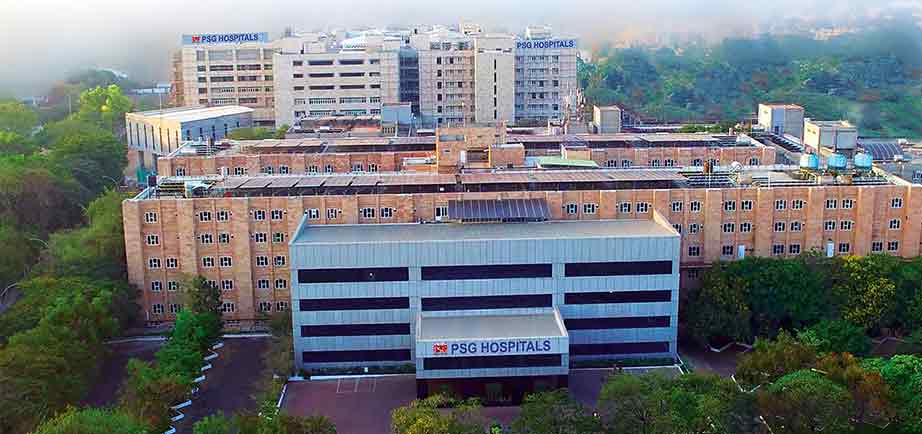
- Home
- Specialties
- Doctors
- Education
- About PSG Hospitals
- Supporting Departments
- Services
- Health Packages
- Education
- Research
- Media
- Organ Transplantation
- Career
- PSG Hospital Certified Course
- Super Speciality Courses
- Patient Referrals
- Feedback
- Social Responsibilities
- Quick Links
- COVID-19
- PSG Medi Pulse
- Contact Us
- Broad Specialties Departments
- Anaesthesiology
- Dental Surgery
- Dermatology
- ENT Surgery
- General & Gastro Intestinal Surgery
- General Medicine
- Obstetrics and Gynaecology
- Ophthalmology
- Orthopaedics & Trauma
- Paediatrics
- Physical Medicine & Rehabilitation
- Psychiatry
- Radiology
- Respiratory & Chest Medicine
- Naturopathy & Yoga
- Super Specialties Departments
- Aesthetic / Cosmetic Surgery
- Bariatric & Metabolic Surgery
- Cardiothoracic & Vascular Surgery
- Cardiology & Preventive Cardiology
- Developmental Pediatrics
- Endo Gynecology
- Endocrinology & Diabetology
- Family Medicine
- Fertility Clinic & Centre for Reproductive Medicine
- Gastroenterology
- Hepato-Pancreato-Biliary Surgery & Liver Transplant
- Interventional Radiology
- Medical Oncology
- Nephrology
- Neurology
- Neurosurgery
- Nuclear Medicine
- Paediatric Surgery
- Pediatric Cardiology
- Pediatric Oncology
- Plastic Surgery
- Pulmonology
- Rheumatology
- Surgical Oncology
- Urology & Andrology
- About PSG Hospitals
- PSG & Sons’ Charities
- PSG Institutions
- Our Milestones
- Vision & Mission
- Quality Policy
- Leadership
- Awards & Recognitions
- Accreditation & Ranking
- Supporting Departments
- Dietary
- Quality Management
- Central Sterilization and Supply Department
- Institutional Human Ethics Committee
- Marketing
- Information Technology










